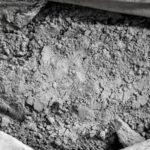The Europe sandwich panels market size stood at a value of USD 3,643.3 million in 2023. The market is further expected to grow at a CAGR of 5.2% in the forecast period of 2024-2032 to attain a value of USD 4,943.6 million by 2032. These statistics reflect the dynamic and expanding nature of the construction industry in Europe. As the demand for sustainable, energy-efficient, and cost-effective construction materials continues to rise, sandwich panels have emerged as a versatile and advantageous choice for builders and developers across the continent.
In this blog post, we will delve into the numerous advantages of using sandwich panels in European construction projects. From energy efficiency and sustainability to faster construction and design flexibility, sandwich panels offer a wide range of benefits that are helping shape the future of the construction industry in Europe.
Energy Efficiency: Keeping Europe Warm and Cool
One of the key advantages of sandwich panels in European construction is their exceptional energy efficiency. Sandwich panels consist of a core material, typically an insulating material such as polyurethane foam or mineral wool, sandwiched between two outer layers. This design provides excellent thermal insulation properties, helping to regulate indoor temperatures and reduce the need for excessive heating or cooling.
Reducing Heating and Cooling Costs
In the cold winters of Northern Europe and the scorching summers in the Mediterranean region, maintaining comfortable indoor temperatures is crucial. Sandwich panels excel in this regard by minimizing heat transfer. They act as a barrier to external temperature fluctuations, significantly reducing the energy required to heat or cool a building.
Compliance with European Energy Efficiency Standards
The European Union has been actively promoting energy-efficient building practices to reduce carbon emissions and combat climate change. Sandwich panels align perfectly with these goals. By using these panels in construction, builders can easily meet or exceed the stringent energy efficiency standards set by EU directives and local building codes.
Sustainability: Eco-Friendly Construction in Europe
Sustainability is a cornerstone of modern construction practices in Europe, and sandwich panels play a vital role in achieving eco-friendly building solutions.
Eco-Friendly Materials
Sandwich panels are often made with environmentally friendly materials. The outer layers can be sourced from sustainable forestry, while the core insulation materials are frequently recyclable. This combination reduces the environmental impact of construction projects across Europe.
Reduced Environmental Footprint
The reduced energy consumption associated with sandwich panels also contributes to a lower carbon footprint. As Europe moves towards greener construction practices, the use of energy-efficient materials like sandwich panels becomes not only an advantage but also a necessity.
Recycling and Reusability
Sandwich panels are designed for longevity, but when they eventually reach the end of their life cycle, they are recyclable. This sustainability feature aligns with the circular economy principles promoted by the EU, emphasizing the importance of reducing waste and reusing materials whenever possible.
Faster Construction: Meeting European Timelines
Time is of the essence in construction projects, and sandwich panels are renowned for their ability to expedite the building process.
Prefabrication and Ease of Installation
Sandwich panels are often prefabricated off-site, allowing for quick and efficient installation. This reduces on-site labor requirements and construction time, enabling European projects to meet tight deadlines.
Shortened Construction Timelines
European construction projects often face seasonal constraints, weather challenges, and economic pressures. The rapid installation of sandwich panels helps shorten construction timelines, enabling builders to complete projects on schedule and within budget.
Cost Savings
Faster construction not only saves time but also leads to cost savings. Reduced labor costs and shorter project durations translate into more economical construction solutions for European developers.
Durability and Strength: Weathering the European Elements
European construction projects must contend with a wide range of weather conditions, from freezing winters to scorching summers and everything in between. Sandwich panels are designed to withstand these challenges.
Structural Integrity and Load-Bearing Capacity
Sandwich panels offer robust structural integrity, making them suitable for various building types. They can bear heavy loads, making them a reliable choice for European construction projects, whether it’s a warehouse in Germany or a residential building in Spain.
Resistance to Weather and Environmental Factors
European countries experience diverse weather patterns, and sandwich panels are engineered to resist the impact of these conditions. They are highly resistant to moisture, corrosion, and UV radiation, ensuring the longevity of buildings in any climate.
Longevity
The durability of sandwich panels means that buildings constructed with them will remain in good condition for decades. This long life expectancy reduces the need for maintenance and repair, further contributing to cost savings over the building’s lifecycle.
Design Flexibility: Crafting European Architecture
European architecture is known for its diversity and rich history. Sandwich panels offer design flexibility that complements this architectural heritage while also embracing modern trends.
Architectural Freedom and Customization Options
Architects and builders appreciate the design freedom that sandwich panels offer. These panels can be customized in terms of color, texture, and finish, allowing for a wide range of aesthetic possibilities. Whether it’s a traditional building in Prague or a contemporary structure in Milan, sandwich panels can adapt to the desired style.
Aesthetic Appeal
Sandwich panels are not just functional; they also contribute to the visual appeal of buildings. The clean lines and sleek finishes they offer are in line with modern design aesthetics, making them a preferred choice for many architects and designers across Europe.
Versatility in European Construction Applications
From residential homes to industrial facilities and commercial buildings, sandwich panels are versatile enough to be used in a variety of construction applications. This adaptability ensures that they can meet the unique requirements of European construction projects of all types and sizes.
Cost Efficiency: Maximizing Value in European Construction
In an era where cost-effectiveness is a top priority, sandwich panels offer significant economic advantages for European construction.
Lower Material and Labor Costs
The efficient use of materials and reduced labor requirements associated with sandwich panels translate into cost savings. Builders can allocate their budgets more effectively, making construction projects financially sustainable.
Reduced Maintenance Expenses
Sandwich panels require minimal maintenance over their lifespan, reducing ongoing operational costs. This is particularly appealing to European businesses and homeowners who seek to minimize long-term expenses.
Examples of Cost-Effective European Construction Projects
Numerous European construction projects have successfully leveraged the cost advantages of sandwich panels. Case studies highlight the financial benefits realized by choosing these panels as a construction material.
Case Studies: Realizing the Benefits
To illustrate the advantages of sandwich panels in European construction, let’s explore a few real-world case studies where these panels have played a pivotal role.
Case Study 1: Energy-Efficient Housing in Scandinavia
In the chilly Nordic climate, energy efficiency is paramount. In a residential development in Sweden, sandwich panels were used for exterior walls and roofing, resulting in substantial energy savings for homeowners. The insulation properties of the panels helped maintain comfortable indoor temperatures throughout the year, reducing heating costs by up to 30%.
Case Study 2: Sustainable Commercial Building in Germany
In Frankfurt, a sustainable commercial building utilized sandwich panels for both insulation and aesthetic purposes. The eco-friendly materials used in the panels aligned with the city’s green building initiatives. Moreover, the quick installation of the panels allowed the project to be completed on time and within budget, attracting eco-conscious tenants.
Case Study 3: Industrial Facility in Italy
In Italy, an industrial facility required a construction solution that could withstand the Mediterranean climate while offering ample space and cost-efficiency. Sandwich panels were used for the walls and roof, ensuring temperature regulation in the facility. The durability of the panels minimized maintenance needs, making it an ideal choice for industrial applications.


